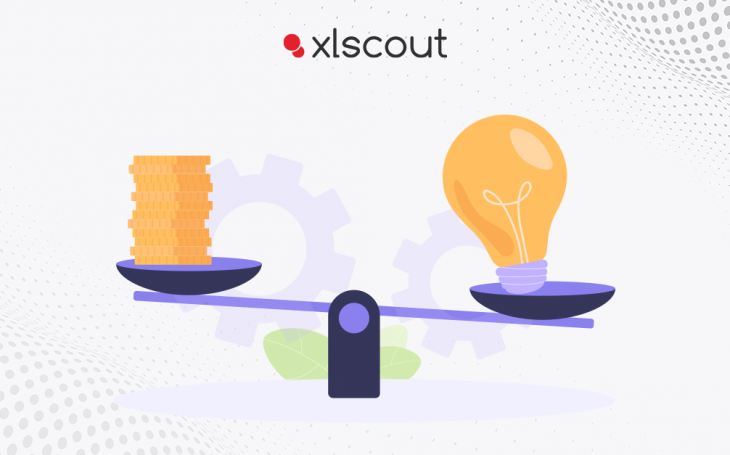
An innovation pipeline is a business framework that assists businesses in meeting their objectives by incorporating innovative methods and processes. In essence, it makes your innovation strategy a reality; it will outline how you will concentrate on the real customer problems that require a solution.
Successful and innovative businesses typically excel at a variety of tasks. The most important of these is consistently producing innovations that create a measurable difference in the technological and market spaces in which it operates. Moreover, it requires a significant amount of time, resources, and innovative thinking to move quality innovations down the lifecycle and into the marketplace. During this process, decisions about which opportunities to pursue are made. While most people strive to develop and commercialize game-changing technologies, progress is often incremental, with high-quality ideas that address consumer needs. It is not always simple to determine which technologies will achieve these objectives. In fact, it is rarely the case.
Although innovation varies by company and industry, a few fundamental principles apply to all innovation efforts. To begin with, there will be setbacks, and some innovations may never progress past the ideation and innovation disclosure stages. Second, creating an innovation pipeline with a variety of high-quality ideas necessitates actively evaluating which ideas require your time and attention. Taking these into consideration necessitates understanding the connection between innovation quality and quantity, as well as avoiding conflicts between these goals in your innovation pipeline.
Quantity and Quality in Collaboration
It is possible for innovation to be chaotic, but it does not have to be. Sound policies at the C-suite level that consider the realities of day-to-day innovation are a good place to start. Taming the innovation process may also entail standardizing workflow processes for innovation teams that are currently reliant on inefficient corporate cultures or the special talents of a few innovators. However, innovation is a team sport that requires seamless collaboration across various disciplines to succeed. AI-powered tools can help capitalize on collaboration by automating and simplifying workflows to create an innovation pipeline with a variety of high-quality opportunities.
- Ideation: Innovation teams are constantly determining which ideas in their infancy could be technologically improved and are prospects for invention disclosures early in the innovation lifecycle. Using AI-based tools like XLSCOUT can aid in the development of a standardized innovation system. Users can evaluate the patentability of multiple, fully defined novel ideas in real time. This reduces the number of communications between teams, making collaboration more efficient and yielding a higher ROI.
- Innovation disclosures: Writing high-quality innovation disclosures should not be an afterthought, nor should quality be sacrificed for speed. Disclosing involves input from R&D, legal, and C-suite teams in many organizations. With limited and efficient collaboration, XLSCOUT can assist in writing innovation disclosures that are ready for the innovation pipeline as patentable ideas or defensive publications.
- Idea validation: Validation workflows help determine an idea’s technical and commercial value. This workflow frequently necessitates extensive communication among teams in order to analyze technological and market landscapes within the context of legal and commercial trends. Using XLSCOUT’s AI-based tools, you can compare your ideas to existing technologies using powerful semantic AI technologies, allowing you to determine their value depending on fully realized technical specifications.
Quantity and Quality Analytics
Based on their descriptions, ideas can be quickly evaluated for novelty using a single integrated and transparent metric. Novelty Checker allows you to compare an idea to existing technologies across all related technological domains in order to identify existing or potential competitors. Determine which iterations of an idea stand out quickly to put you on the path to high-quality disclosures that can be easily converted to patents or defensive publications.
Selecting which technologies to undertake should always be data-driven. However, manually compiling and analyzing comprehensive overviews of technological and market landscapes takes time and is prone to error. Organizations can benefit from tools that provide meaningful, actionable insights to multiple teams in real time. You can use these tools in conjunction with visualization and document summary applications to quickly spot important information uncovered in patent searches.
Quantity and Quality in the Innovation Pipeline
Validate the output of ideation workflows by focusing on companies, specific patents, and technology families to determine where your ideas fit in the market. With comprehensive AI-based analytics, XLSCOUT’s intelligence reports can reveal new ways to improve products.
Improve collaboration by providing all relevant teams with descriptive, standardized, and holistic reports on the status of a patent portfolio and the individual technologies within it. To build your innovation pipeline, our AI-based tools can help to conduct a detailed analysis of the technology landscape to distinguish your idea from those that are currently available and in development.

